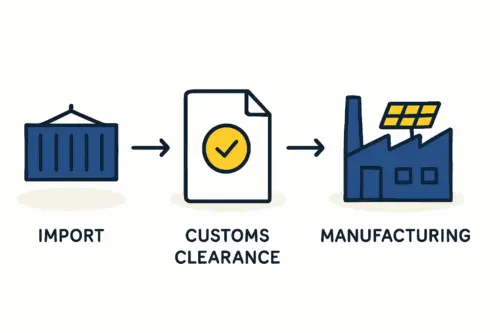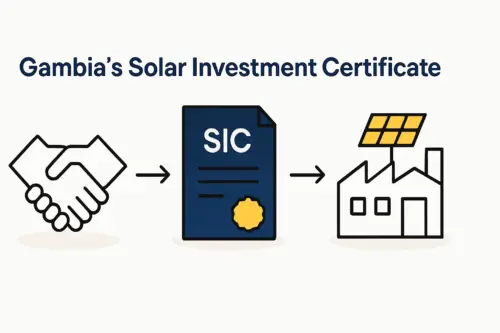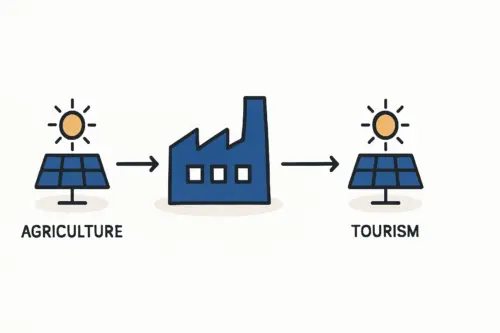An investor can secure financing, acquire land, and procure the machinery for a new solar module factory. Yet the most critical component for long-term success is often the last one considered: human capital.
In a market like Gambia, where industrial manufacturing is still nascent, the question isn’t whether talent exists, but how to develop it. The country’s large youth population—with over 60% under the age of 25—represents a vast potential workforce, but harnessing this potential requires a deliberate strategy.
This article moves beyond theory to outline practical models for recruiting, training, and retaining a skilled local workforce for solar module assembly in Gambia, offering actionable frameworks for entrepreneurs looking to build a sustainable and competitive operation.
The Human Capital Equation: Why Local Talent is a Strategic Asset
For any new industrial venture in Gambia, building a local team is not merely a social responsibility; it’s a fundamental business strategy. A local workforce offers significant advantages, including lower operational costs, greater community integration, and improved long-term operational stability.
The Government of Gambia recognizes the importance of technical and vocational education and training (TVET) as a cornerstone of its National Development Plan. This national focus creates fertile ground for manufacturing enterprises.
Instead of viewing the workforce as a challenge to be overcome, successful investors see an opportunity to build a competitive advantage from the ground up. The goal is to foster a self-sustaining ecosystem of skilled labor that can support the factory’s growth for years to come.
Core Competencies for Solar Module Assembly
Before designing a training program, it’s essential to understand the specific roles required. While the technology is advanced, the tasks themselves are well-defined and can be taught to individuals with the right aptitude. A typical semi-automated factory requires staff across three main categories.
Detailed information on the specific roles and team sizes can be found in this overview of [Link 1: Labor requirements for solar module manufacturing].
Technical Machine Operators
Technical machine operators handle the day-to-day operation of production equipment. Their tasks include loading materials, monitoring processes, and ensuring machines like the solar cell tabber-stringer function correctly. The ideal candidate is process-oriented with strong attention to detail. Understanding how [Link 2: What is a solar cell stringer machine?] works is a core part of their training.
Quality Control Technicians
Quality is paramount in solar module manufacturing. QC technicians perform visual inspections, run diagnostic tests like electroluminescence testing, and ensure every panel meets international standards. This role demands meticulousness and the ability to follow strict procedural guidelines.
Ready to make big Profits?
The solar Industry is Booming
WE HELP NEWCOMERS to the solar industry start their own solar module production line. Customers can make BIG PROFITS by selling modules and finding investors, without wasting money and time on things they don't need!
Maintenance and Engineering Staff
This team keeps the factory’s equipment operational. Their responsibilities range from routine preventative maintenance to troubleshooting complex electromechanical issues. Staff in this category typically need a stronger background in electrical or mechanical engineering.
Practical Training Models for the Gambian Context
There is no single best way to train a workforce; the optimal approach often combines several methods. Based on experience from J.v.G. turnkey projects in emerging markets, three models have proven particularly effective.
Model 1: The Turnkey Partner Training Program
The most direct path to operational readiness is an intensive training program provided by the technology and equipment supplier. When a new production line is commissioned, the supplier’s engineers remain on-site for several weeks.
During this period, they conduct hands-on training for a core group of locally hired employees. This program focuses on:
- Machine Operation: Direct instruction on every piece of equipment.
- Process Standards: Teaching the precise steps for assembly and quality assurance.
- Basic Maintenance: Equipping the local team to handle common operational issues.
A key feature of this model is the ‘train-the-trainer’ approach. The supplier’s experts identify promising local employees and provide advanced instruction, enabling them to become in-house trainers for future hires. This knowledge transfer is critical for long-term self-sufficiency.
Model 2: The Institutional Partnership Approach
A more sustainable, long-term strategy involves collaborating with local educational institutions. Gambia has several organizations dedicated to developing technical skills, creating a clear opportunity for partnership.
Institutions like the Gambia Technical Training Institute (GTTI) and the University of The Gambia’s engineering faculty are prime candidates. A solar enterprise could work with them to:
- Develop a Specialized Curriculum: Co-create short courses or modules focused specifically on photovoltaic assembly and quality control.
- Offer Internships: Provide students with practical, on-the-job experience within the factory.
- Sponsor Equipment: Donate smaller lab equipment to the institution to facilitate hands-on learning that mirrors the factory environment.
This model creates a predictable pipeline of pre-qualified candidates who enter the workforce with a foundational understanding of the industry, significantly reducing initial training time and cost.
Model 3: The Phased In-House Apprenticeship
This model is built around continuous, structured on-the-job training. It begins with the core team trained under Model 1, who then mentor new cohorts of apprentices.
New hires start in simpler roles, such as material handling or visual inspection, and gradually progress to more complex tasks like machine operation and quality testing. This approach is particularly effective for developing deep, company-specific skills and fostering loyalty.
It works well regardless of the initial factory setup, complementing both [Link 3: Manual vs. automated solar production lines]. The apprenticeship model ensures that process knowledge becomes deeply embedded within the organization.
Frequently Asked Questions (FAQ)
-
How long does it take to train a new operator for a solar assembly line?
A candidate with good mechanical aptitude can typically achieve basic proficiency on a specific machine within four to eight weeks of intensive, hands-on training. Mastery and the ability to troubleshoot minor issues may take several more months of on-the-job experience. -
Is it necessary to hire foreign experts for a factory in Gambia?
It’s standard practice to rely on foreign experts for the initial setup, commissioning, and training phases. The primary goal, however, should be to transition to a fully local operational team within 12 to 24 months. A few key management or senior engineering roles might remain with expatriates for a longer period to ensure knowledge transfer is complete. -
What are the most important soft skills to look for in local recruits?
Beyond technical aptitude, critical soft skills include attention to detail, process discipline, and a collaborative mindset. Solar module assembly is a precise, step-by-step process where even small deviations can lead to significant quality issues. Candidates who demonstrate patience and a methodical approach are often the most successful. -
Can existing government programs in Gambia support employee training?
Gambia’s national focus on skills development creates opportunities for collaboration. Entrepreneurs should investigate potential partnerships with the Ministry of Higher Education, Research, Science and Technology or programs aligned with the National Development Plan to explore subsidized training or curriculum development.
Conclusion: Building a Foundation for Growth
Establishing a skilled workforce for a solar module factory in Gambia is not an insurmountable obstacle but a strategic opportunity. By combining intensive initial training from technology partners with long-term institutional collaborations and in-house apprenticeships, an investor can build a capable, cost-effective, and sustainable local team.
This approach transforms the challenge of a nascent industrial sector into a competitive advantage, leveraging Gambia’s youthful population to power its own energy future. A well-executed training strategy is the final, essential step in turning a factory’s blueprint into a thriving industrial reality.








